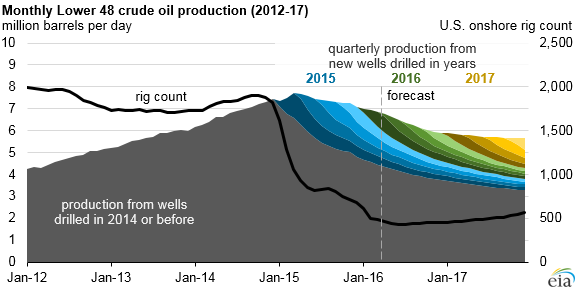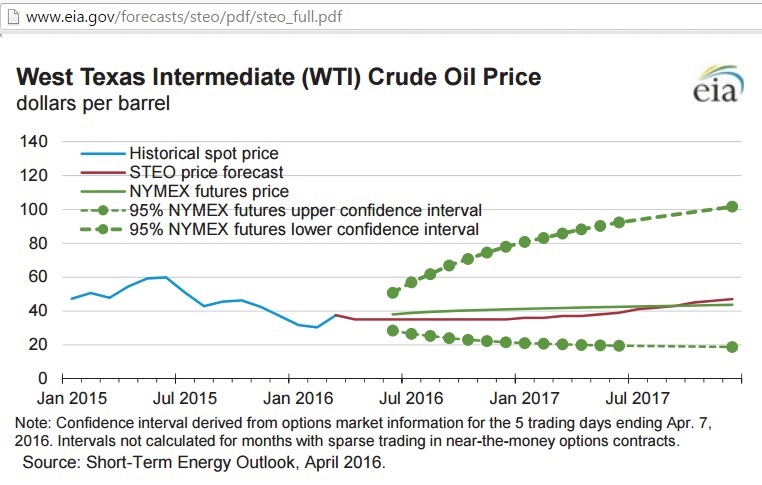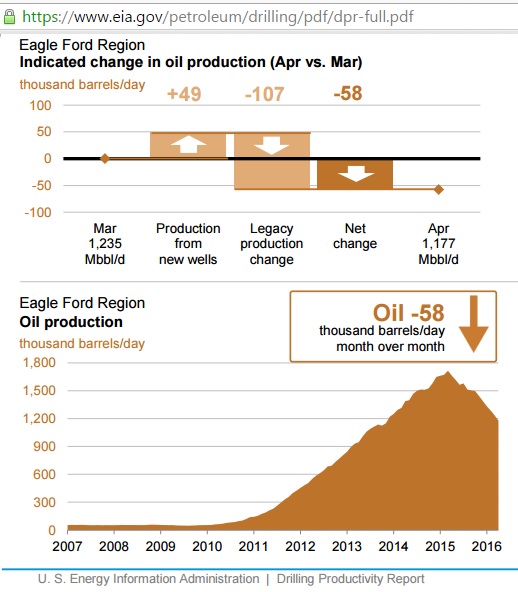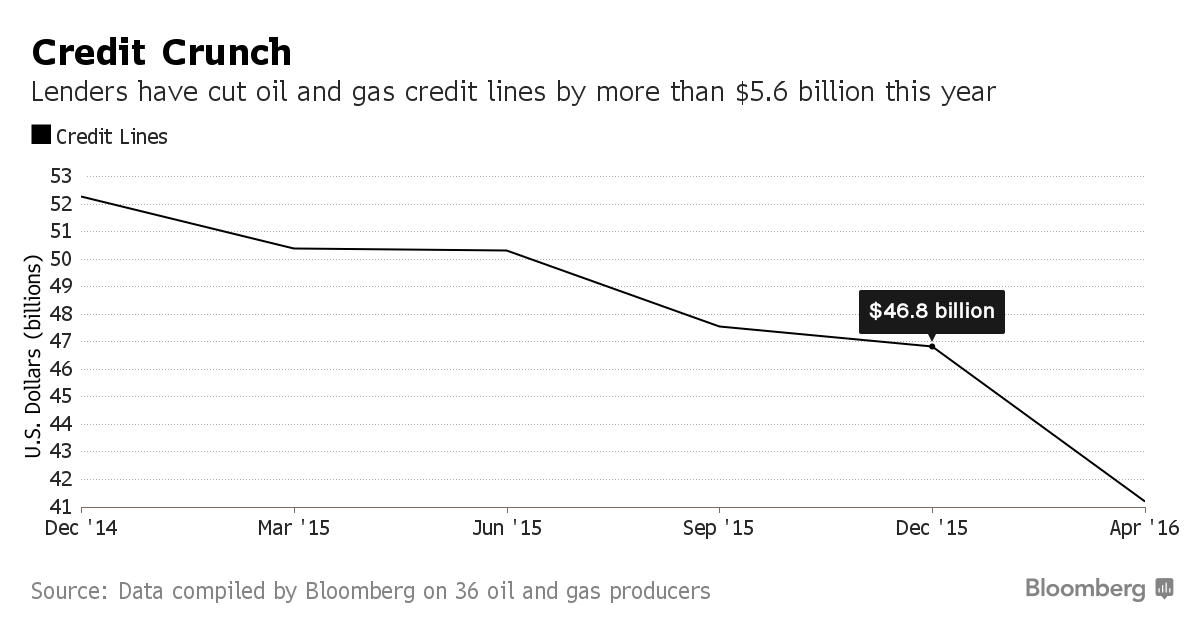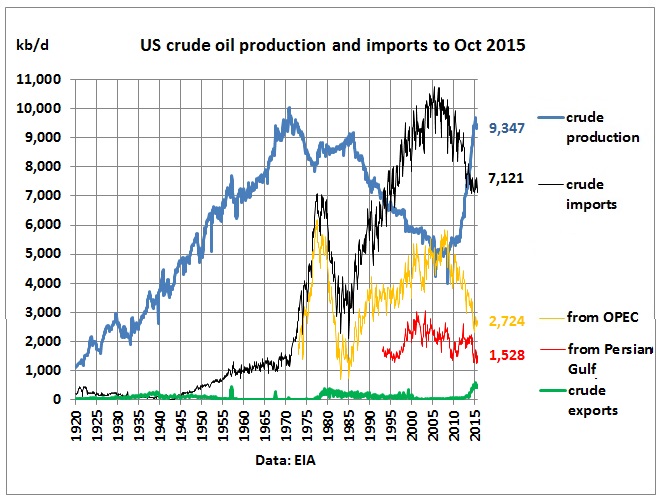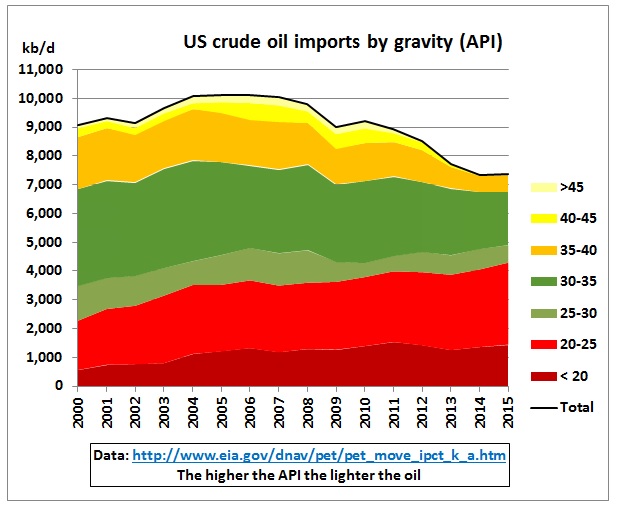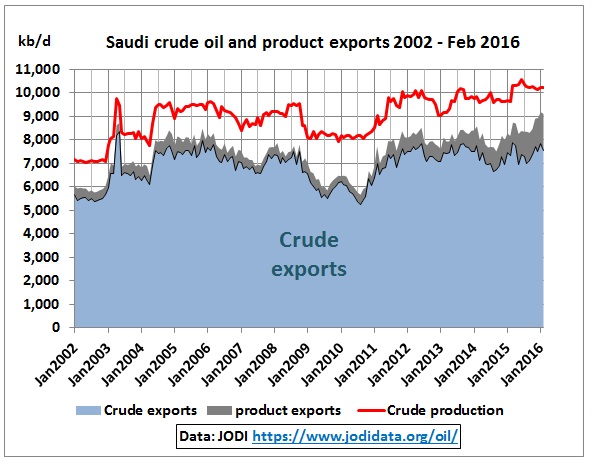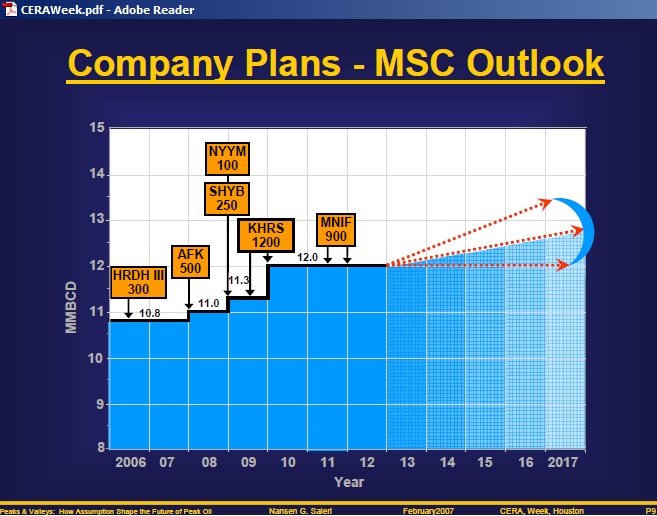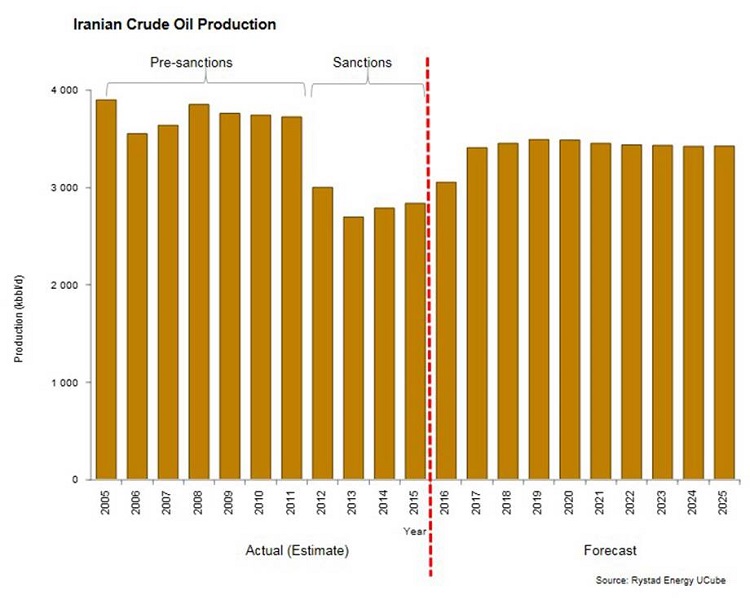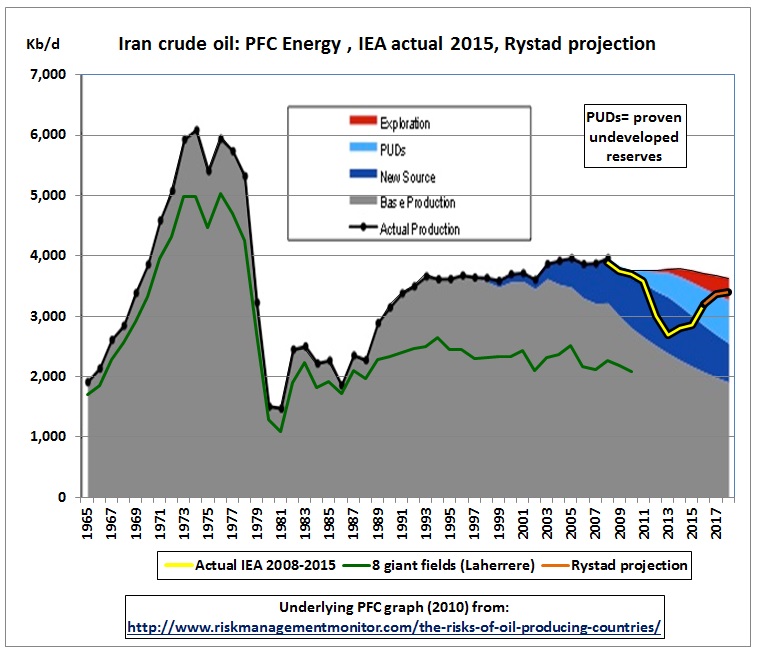Four times in as many months did ABC publish inaccurate statements about US shale oil. A glut of mis-information. This is unacceptable because it leads to wrong policy decisions and has ultimately damaging economic and financial consequences.
(1) “US shale producers pump like never before”
Just in time for last year’s X’mas we received these reassuring news:
Peak oil losing credibility as renewables shift accelerates
24/12/2015
“US shale producers are pumping like never before and adding to stockpiles”
http://www.abc.net.au/news/2015-12-24/peak-oil-losing-credibility-as-shift-to-renewables-accelerates/7052196
(2) “US virtually self-sufficient in oil”
This was broadcast on the 7 pm news (ABC channel 1)
16/1/2016
“The United States is now virtually self-sufficient in oil, while Saudi Arabia, the world’s biggest producer, has stepped up production to protect its market share.”
http://www.abc.net.au/news/2016-01-16/benefits-of-falling-oil-prices-not-fully-passed-on-to-motorists/7091862?section=business
(3) “US oil output rises”
Two months later the headline was:
Oil output rises even as US rig count falls to historic lows
18/3/2016
“The US Energy Information Agency said, despite the dramatic decline in rig numbers, production has steadily grown, indicating that drilling has becoming increasingly efficient”
http://www.abc.net.au/news/2016-03-18/oil-output-rises-even-as-us-rig-count-falls/7259566
This ABC article included the following graph
Fig 1: EIA’s annual US oil production
Coming from this post by the EIA:
Hydraulic fracturing accounts for about half of current U.S. crude oil production
15/3/2016
http://www.eia.gov/todayinenergy/detail.cfm?id=25372
The graph shows that indeed 2015 production is higher than 2014 but the ABC author failed to look at monthly statistics where a turning point was already visible.
(4) “New shale oil technology the end of OPEC”
In the most recent article “Saudi Arabia to sell part of Aramco as part of shift from oil” we find this para:
New shale oil technology ‘the end of OPEC’
26/4/2016
“With US shale oil producers pumping more than ever before and Iran production coming back on line with US sanctions lifted, the planned Saudi reforms underscore the damage from falling revenues.”
http://www.abc.net.au/news/2016-04-26/saudi-arabia-to-sell-part-of-aramco-as-part-of-shift-from-oil/7360388?section=business
Corrections on US shale oil
For each of the 4 articles no-one in ABC looked at monthly oil statistics available at the time.
These statistics show that US crude oil – and therefore shale oil – production has peaked in April 2015. And it would have been so easy to find the relevant information:
- In your internet browser type in following search word “EIA US crude oil production” and click on the 1st line “Crude Oil Production – US Energy Information”. You get: https://www.eia.gov/dnav/pet/pet_crd_crpdn_adc_mbblpd_a.htm
- As we want the latest data, select “Monthly Thousand Barrels per Day”
- In the row “US” click on “View History”
- Scroll down to the bottom of the page
- Find in 2015 the month of maximum production. Done
Fig 2: US crude production table
https://www.eia.gov/dnav/pet/hist/LeafHandler.ashx?n=PET&s=MCRFPUS2&f=M
We see that the US shale oil boom started in 2010/11 and reached a maximum in April 2015. In January 2016, US crude production was down by 500 kb/d (5% of the total or 12% of shale oil).
But it gets even easier and more informative to go through the EIA series of articles “Today in Energy”. The author of ABC article (3), Peter Ryan, was aware of these series because Fig 1 is from there. We find the following graph published on 20/4/2016
Fig 3: US lower 48 projection to 2017
http://www.eia.gov/todayinenergy/detail.cfm?id=25892
The grey area shows that all that hard work of increasing production between Jan 2012 and Jan 2015 by around 3 mb/d will have evaporated by end 2016 and that production by end 2017 will even be lower than in Jan 2012. On top of this legacy decline sit the quarterly increments from new wells. It is a permanent battle which is currently lost.
Assumed oil prices for Fig 3 are around $45 a barrel from the Short Term Energy Outlook (STEO) April 2016 http://www.eia.gov/forecasts/steo/pdf/steo_full.pdf
Fig 4: EIA’s oil price outlook
We see a huge uncertainty between lower and upper bounds of $20 and $100.
As for the increasing efficiency of drilling mentioned in the ABC article (3) the search word “US shale oil drilling efficiency” would have brought the author immediately to the website of the EIA’s Drilling Productivity Report. https://www.eia.gov/petroleum/drilling Clicking on “full report” would have allowed him to view graphs with peaking production in Eagle Ford, for example
Fig 5: Peak oil in Eagle Ford
The graph shows that despite pad drilling and higher rig mobility decline in legacy wells overwhelms new production. This crude oil peak website stacked production from all regions in the drilling report in this post:
30/3/2016 US shale oil peak in 2015
http://crudeoilpeak.info/us-shale-oil-peak-in-2015
In any case, article (4) missed an EIA graph which appeared under “Energy in Brief, Shale in the United States” last updated on 18/4/2016
Fig 6: US tight oil production in shale oil plays
http://www.eia.gov/energy_in_brief/article/shale_in_the_united_states.cfm
The real situation of US shale oil is described in these 2 articles:
AS US shale drillers suffer, even the bankrupt keep pumping
1/4/2016
Texas-based Magnum Hunter Resources, the second-largest producer among publicly-traded companies that have filed for bankruptcy, is a case in point.
It filed for creditor protection last December, but even as the debt-laden driller scrambled to avoid that outcome, its oil and gas production rose by nearly a third between mid-2014 and late 2015, filings show.
http://www.cnbc.com/2016/04/01/reuters-america-as-us-shale-drillers-suffer-even-the-bankrupt-keep-pumping-oil.html
From Bloomberg:
Wall Street’s oil crash, a story told in charts
16/4/2016
The record-breaking surge in U.S. oil production wouldn’t have been possible without a tremendous amount of debt. Many independent drillers, the small producers that drove the shale boom, outspent cash flow even when oil was $100 a barrel, and made up the difference with bank-loans and high-yield bonds. Put simply: No banks, no boom.
Fig 7: Credit lines for US shale companies
To limit their risk, banks have been cutting credit lines. They’re in the middle of their semi-annual review of oil and gas reserve values, which determines how big the credit lines backed by those assets can be. Last year’s re-evaluations were benign. Not anymore. Regulators and investors are pushing banks to limit their exposure to the industry. Since the start of the year, lenders have yanked $5.6 billion in credit from 36 oil and gas companies, according to data compiled by Bloomberg.
http://www.bloomberg.com/news/articles/2016-04-15/wall-street-s-oil-crash-a-story-told-in-charts
Corrections on US energy dependency
Article (2) parrots the wrong idea that the US is on the path to energy sufficiency. The fact is that the US still imports around 7 mb/d of crude oil as shown in this graph (black curve)
Fig 8: US crude oil production and imports
US crude imports started to drop after 2007, when the US went into recession because of high oil prices. After 2010/2011 US shale oil substituted light oil imports. But due to the design of US refineries for heavy oil this process has come to an end after around 2 mb/d.
It should also be noted that the US still imports 2.7 mb/d from OPEC including 1.5 mb/d form the Persian Gulf. More details can be found in the following post on this website:
21/1/2016 The myth of US self-sufficiency in crude oil
http://crudeoilpeak.info/the-myth-of-us-self-sufficiency-in-crude-oil
Again, the search word “EIA US crude imports” and selecting “Product: Crude oil, Period: monthly thousand barrels per day, View History” yields this graph:
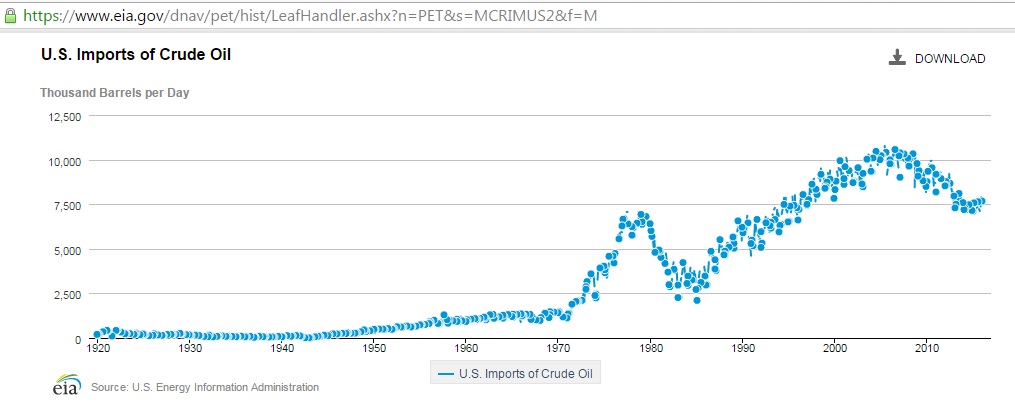
Fig 9: US crude imports have stabilized at around 7.3 mb/d
https://www.eia.gov/dnav/pet/hist/LeafHandler.ashx?n=PET&s=MCRIMUS2&f=M
Fig 10: US light oil imports from Nigeria and Algeria declined
Fig 11: US crude imports by gravity
Data for Fig 10 and 11 from: http://www.eia.gov/dnav/pet/pet_move_ipct_k_a.htm
Imports of heavier oil has been increasing (because of higher crack spreads) while imports of lighter oil has been falling. Total imports declined by 820 kb/d between 2007 and 2010 (as a result of the recession and the financial crisis) and 1,860 kb/d between 2010 and 2014/15 (as a result of shale oil substitution). We therefore see that the US will always have to import crude oil.
Correction on Saudi oil production, exports
Fig 12: Saudi crude oil production and exports, product exports
We need to know that Saudi Arabia burns around 400 kb/d more for power generation in summer months (air conditioning). So if oil production increases in May, that additional oil is unlikely to see global markets.
What really matters are crude oil exports. Fig 12 shows Saudi crude exports have not increased. In fact, in 2015 they were not higher than in 2005! Product exports increased by a modest 200 kb/d between 2015 and 2014. The Saudi Aramco-Sinopec Yanbu refinery (contracts signed 2010) started operation in January 2015.
And those who still speculate that Saudi Arabia tries to flood the market to kill US shale oil should ask themselves: if Saudi Arabia really had 265 Gb of proven oil reserves (equivalent to 73 years worth of current production) then why are they not producing 12 mb/d or more as planned in 2007 by Saudi Aramco:
Fig 13: Slide 9 in “How assumptions shape the future of peak oil” by Dr. Saleri
(MSC= Maximum Sustainable Capacity should be 12.5 mb/d by now)
In the latest ABC article (4), it reads:
“Saudi Arabia has unveiled ambitious plans to eventually end the nation’s historic reliance on oil production and exports to the rest of the world.”
We may add: …. and – conversely – the rest of the world should now plan how to end its reliance on Saudi oil before it is too late.
End of OPEC and Iran
To think that the US shale technology brings about the end of OPEC is a bit premature. For sure, Iranian oil production comes back at an inconvenient time of lower oil prices. And there are conflicts between Iran and Saudi Arabia. But Iran is a member of OPEC. And we should be interested in what is happening there.
Oslo based Rystad Energy reports:
LARGEST GROWTH IN IRAN’S OIL PRODUCTION IN 2017; UNLIKELY TO REACH PRE-SANCTION LEVELS
23/2/2016
Rystad Energy’s latest research expects Iranian crude oil production to rise to 3.4 million barrels per day in 2017, from approximately 2.8 million barrels per day in 2015, reflecting the largest growth in oil production for almost a decade.
However, Rystad Energy’s analysis predicts that output will not reach the pre-sanction level, which is above 3.7 million barrels per day, highly due to the country’s lack of new investment and declining production rate from maturing fields.
Fig 14: Rystad Energy’s projection of Iran’s oil production to 2025
Let’s put that into Iran’s long term graph
Fig 15: Iran’s oil production since 1965
Iran’s oil production peaked in the mid 1970s under the Shah, before the revolution. That peak triggered the 2nd oil crisis in 1979. The underlying graph from PFC Energy shows decline in existing fields. Problems with compensating this decline have resulted in Iran’s 2nd and last peak which started around 2003-2005, interrupted by the sanctions. And this is the job ahead:
Iran needs $200bn oil investments
9/2/2016
“To develop the joint fields and enhance recovery of oil reservoirs as well as secure development targets, we need investment totalling $200 billion dollars,” Bijan Zangeneh, Iran’s oil minister told reporters.
Zangeneh said the upstream sector requires $130 billion in investments, while $70 billion needs to be injected into processing facilities and oil refineries.
“We have to think to provide it through foreign resources and after acquiring of technology,” he said, adding that Iran’s domestic resources are not sufficient enough to develop the country’s oil industry, as reported by Sputnik news agency.
http://www.presstv.ir/Detail/2016/02/09/449460/Iran-needs-200bn-oil-investments-/
Summary:
The 4 ABC articles start off with an interview with Shane Oliver from AMP who expresses his personal, blue eyed opinions without presenting supporting statistical evidence. Where, for example, are his meaningful data which show that the world is voluntarily, orderly and sustainably moving away from oil, especially in Australia? Shane fails to understand that global oil peaking is a complex process which started in 2005 and has already damaged the system. It contributed to the financial crisis and forced the US Federal Reserve to print money (QE1 – QE3) which in turn financed an unsustainable shale oil boom with steep decline rates given by the oil geology in tight oil reservoir rocks.
This false narrative of unending US shale oil supply continues like a red thread through the subsequent 3 articles.
Why did ABC TV not interview Fatih Birol, Executive Director of the International Energy Agency, who visited Canberra in February 2016 and had a meeting with Energy Minister Frydenberg? The broadcaster and all its staff could have at least learned this lesson:
Low oil prices could put energy security at risk
9/2/2016
“Dr Birol conveyed an important and somewhat sober message that lower oil prices do not mean endless supply,” Mr Frydenberg said.
http://www.smh.com.au/business/energy/low-oil-prices-could-put-energy-security-at-risk-international-energy-agency-20160208-gmohf7.html
Of course, this belated insight has yet to translate into concrete action in the government’s energy and transport policy. That it hasn’t so far is caused by a lack of societal awareness of the real problems due to the media ignoring them.
Conclusion:
After ABC Catalyst’s oil crunch story in 2011 (in which Fatih Birol participated) ABC TV dropped the ball on this topic. Continuing failure of ABC to inform the public on oil truthfully lulls the public into believing everything is fine. And that is why the electorate unsuspectingly allows governments to waste billions of dollars of tax-payer money and super annuation contributions on mis-investments in oil dependent infrastructure like, for example, NorthConnex and WestConnex road tunnels in Sydney, the Monash Freeway in Melbourne and Sydney’s proposed 2nd airport.
Further reading
Is shale oil drilling a Ponzi scheme?
8/6/2015
Discussing the shale oil revolution, with Dan Dicker, MercBloc President, and author of “Shale Oil Boom, Shale Oil Bust – The Myth of Saudi America.”
http://video.cnbc.com/gallery/?video=3000386519
Saudi America? The US oil boom in perspective
22/4/2016
Is America really the new Saudi Arabia of oil, or did the recent surge in U.S. production obscure the risks still posed by America’s profound dependence on oil? With a dramatic drop in prices sending shockwaves throughout the oil industry, and dampening the early euphoria about a shale oil revolution, do we need to re-think what the recent U.S. oil boom really means for America’s energy security? What factors have fundamentally changed and what realities remain essentially the same?
https://energyx.org/saudi-america/
A Return To Higher Oil Prices: It’s Complicated
Art Berman
Labyrinth Consulting Services, Inc.
26/4/2016
http://www.artberman.com/wp-content/uploads/Buffalo-CFA-Presentation-26-APR-2016-1.pdf


